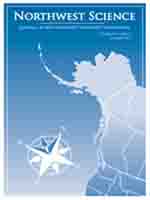Supplementation is a widespread response to the declining runs of anadromous salmonids in the Pacific Northwest. A common type of supplementation is the intentional release of adult hatchery fish to spawn naturally (outplanting) but this method has seldom been evaluated. Our objective was to quantify the juvenile steelhead (Oncorhynchus mykiss) produc tion from the adult outplants during a 14 year period in two streams. Although densities of juvenile steelhead were highly variable, outplanting status (supplemented versus not supplemented) explained a significant proportion of the variance for the age-1 densities but not for the age-2 densities. We used a simulation model to predict smolt production and adult returns given the observed juvenile age-1 densities from each adult cohort we outplanted. In general, predicted smolt production was greater during the mid 1990s and lower after 1999, despite the fact that more females were stocked into the study streams after 1999. Given the SAR rates measured during the study period and plausible over-winter survival rates in the study streams, we predicted that the observed juvenile production would produce few adults and would not result in a self-sustaining population. This conclusion was corroborated by adult return data. VVe found no evidence that adult outplanting increased wild population levels, i.e., there was no demographic boost in adult spawners. Further, the differences between lire two study streams showed that supplementation programs should carefully assess each target stream.
BioOne.org will be down briefly for maintenance on 14 May 2025 between 18:00-22:00 Pacific Time US. We apologize for any inconvenience.
How to translate text using browser tools
1 August 2012
Parr Production from Adult Hatchery Steelhead Outplanted in Two Tributaries to the Headwaters of the Salmon River, Idaho
Alan Byrne,
Timothy Copeland
ACCESS THE FULL ARTICLE

Northwest Science
Vol. 86 • No. 3
August 2012
Vol. 86 • No. 3
August 2012
hatchery stocking
Oncorhynchus mykiss
parr abundance
population supplementation
steelhead




